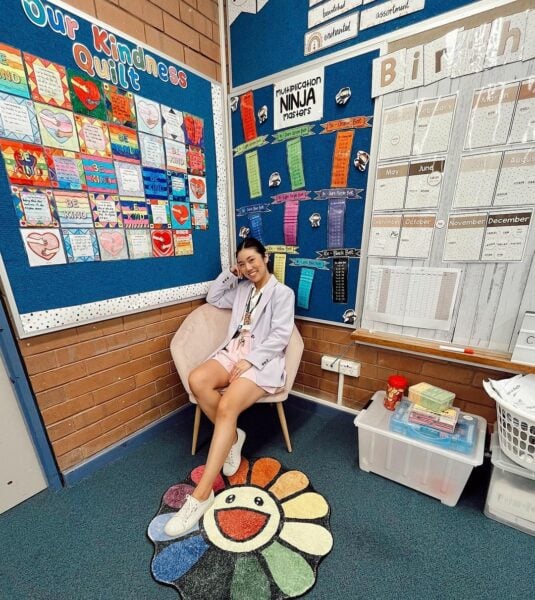As we advance through the 21st century, classrooms are transforming into innovative learning environments. Teachers are continuously seeking new and inspiring ways to decorate their spaces to enhance student engagement, foster a sense of community, and stimulate creativity. Here are 32 simple classroom decoration ideas that educators around the world are adoring in 2024:
1. Sustainable Materials Galore – Incorporate decorations made from recycled and eco-friendly materials to teach sustainability.
2. Interactive Whiteboard Walls – Transform walls into interactive spaces for collaborative learning.
3. Modular Furniture Layouts – Use flexible furniture arrangements to foster collaboration and comfort.
4. Pockets of Nature – Introduce plants and green corners to bring the outdoors inside.
5. Color Dynamics – Apply color psychology by using calming blues and energizing yellows strategically.
6. Educational Murals – Hire local artists to create murals that reflect historical figures or scientific concepts.
7. Personalized Learning Stations – Offer individualized areas where students can take ownership of their learning space.
8. Tech Touchpoints – Create designated areas for charging stations and tech-based activities.
9. Thematic Zones – Decorate parts of the classroom based on different themes (seasons, literature, art).
10. Flexible Seating Options – Provide bean bags, standing desks, or wobble chairs for varied seating choices.
11. Ceiling Hangings – Suspend educational models or art from the ceiling to utilize vertical space.
12. World Map Wallpapers – Encourage global awareness with detailed map wallpapers or decals.
13. Multicultural Corner – Display artifacts, flags, and pictures that celebrate diverse cultures.
14. Literary Nooks – Set up cozy reading areas with book-themed decorations and soft lighting.
15. DIY Organizers – Use homemade storage solutions for supplies that add a personal touch.
16. Math Puzzle Board – Have a bulletin board dedicated to daily math challenges or puzzles.
17. Historical Timeline – Create an interactive timeline along one wall documenting significant events.
18. Language Learning Lab – Designate an area with linguistic decorations for immersive language studies.
19. Art Showcase Strips – Install cork strips or display wires where student artwork is rotated regularly.
20. Quieting Canopies – Drape canopies over reading or focus zones to reduce sensory overload.
21. Science Center – Equip a corner with lab-themed decorations like periodic tables and model molecules.
22. Growth Mindset Graphics – Put up posters and visuals encouraging a growth mindset philosophy.
23. Vocabulary Vines – Hang words alongside their definitions from vines across the ceiling or walls.
24. Goal-Setting Station – Offer a space where students can set targets and track their progress visually.
25. Achievement Board – Display student achievements with photos and descriptions in a celebratory manner.
26. Virtual Reality Area – Set up VR headsets alongside posters about virtual field trips being explored in class.
27. Mindfulness Moment Spot – Create a calming area with soft pillows, sensory toys, and peaceful decor for breaks.
28. Inspiration Quotes – Dot the room with framed inspirational quotes from various thinkers and leaders across time.
29. Classroom Library Genre Labels – Use creative labels for each genre section in your classroom library shelf/corner.
30. Time Capsule Corner – Dedicate a space for storing items students wish to include in an end-of-year time capsule.
31. Audio Story Zone – Lay out headphones for students to listen to audio stories surrounded by related imagery and texts at certain times of the day.
32.Multi-sensory Experience Points – Place tactile materials around the room corresponding with lessons (fabrics for history costumes, sandpaper letters for literacy).











